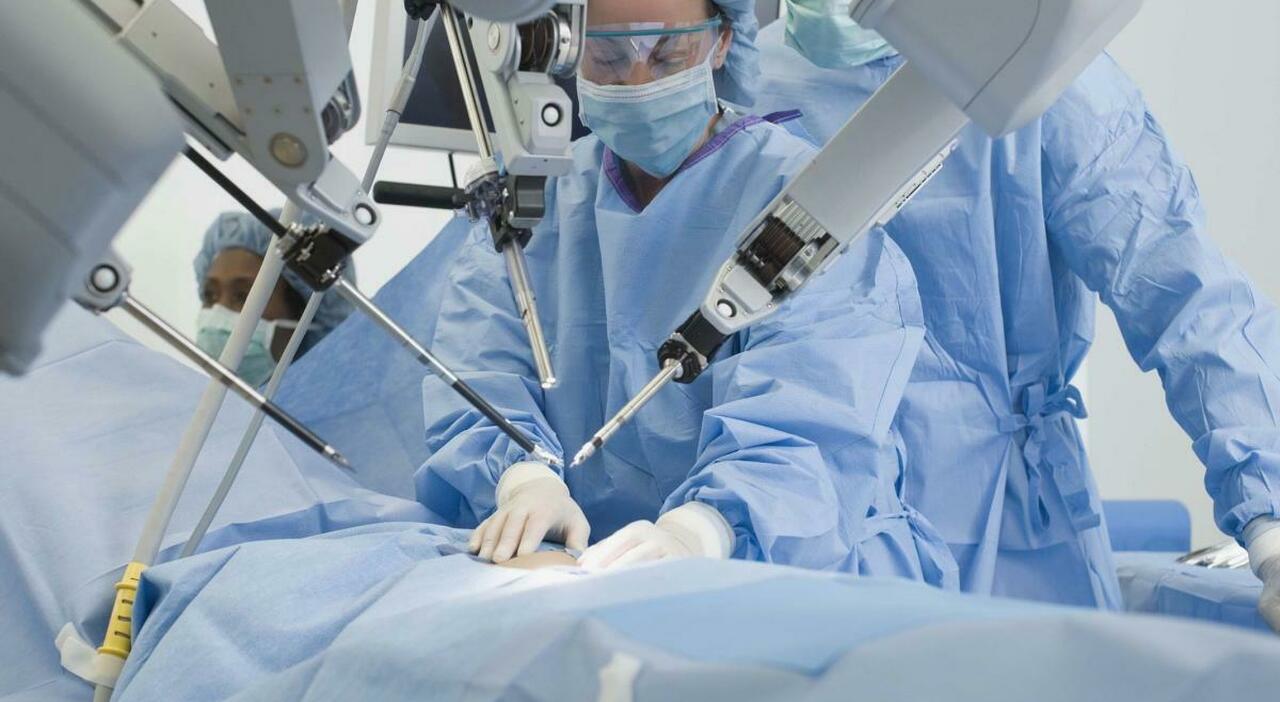The cases have increased. And also the interventions. The activity in the operating rooms of theVeneto Oncological Institute, therefore, since 2018 it has been growing continuously, as confirmed by Pierluigi Pilati, director of the Department of Surgery and head of the Oncological Structure of the digestive tract at the Castelfranco site. Three methods are used depending on the type, size and location of the neoplasm: traditional, laparoscopic and with the robot. And it is precisely the latter that has recorded a boom.
«The numbers highlight the increase – explains the specialist – which is 6%, but the most interesting thing is that we started using the robot in 2021, when we had carried out about 30 major surgeries, while this year we have doubled and by the end of December we will reach 70. Going into details, in 2022 we completed 102 operations on the colorectal, 59 on the esophagus and stomach, 20 on the pancreas and 138 peritoneal carcinomatosis, i.e. with primary or secondary tumors (of gastrointestinal and ovarian) of the peritoneum: of these, intra-abdominal hyperthermic chemotherapy (HIPEC) treatment was also carried out in 57 cases”.
And going into the merits, Pilati adds: «The cases of cancer that we treat – he continued – have undergone a surge of 6-8% from one year to the next. In the last 12 months, the tumors that we have detected most frequently, thanks also to the diffusion of preventive screenings such as colonoscopy after the age of 50 and the search for occult blood in the faeces, are in the colorectal and stomach, and also a share of those of the pancreas, which however arrived when the disease was already advanced and therefore inoperable: for the latter it is still difficult to prevent, they are sneaky and often the diagnosis is too late to intervene surgically. I repeat, screening allows you to obtain excellent results: for example, if colon and rectal neoplasms are identified early, they heal ».
THE TECHNOLOGIES
The use of the robot in the operating room makes it possible to be very precise and to have more adequate resection margins; in addition, the patient’s recovery is rapid and discharges occur early. «In 2023 – Pilati then observed – we count on increasing global surgery activity by 10% compared to 2022, while if we refer only to robotics, considering that the year-on-year boom was 100%, the estimated is a further 30%: 30 cases in 2021, 60 in 2022 and therefore it is presumable that there will be 80 in 2023. It is a method that gives many advantages and we will soon also have new radio frequency devices available which they derive from those used in laparoscopy, which allow to be even more accurate, for example in the dissection of lymph nodes and to obtain perfect hemostasis without suture threads. We tested them in a specialized center and they will soon arrive at the Iov as well. The other interesting thing is the imminent use of robotic mechanical staplers to precisely perform precision sutures even in extremely small spaces. Surgery, therefore, is in the forefront, increasingly refined and precise. Finally, we are thinking of using the robot also for stomach operations which are usually performed laparoscopically». The expense for robotic surgery is much higher than that involving the same laparoscopic operation: for example, for rectal neoplasms 8,000 euros against 12,000. Complications, however, are lower thanks to the robot: 15%, compared to 20% with laparoscopy.
